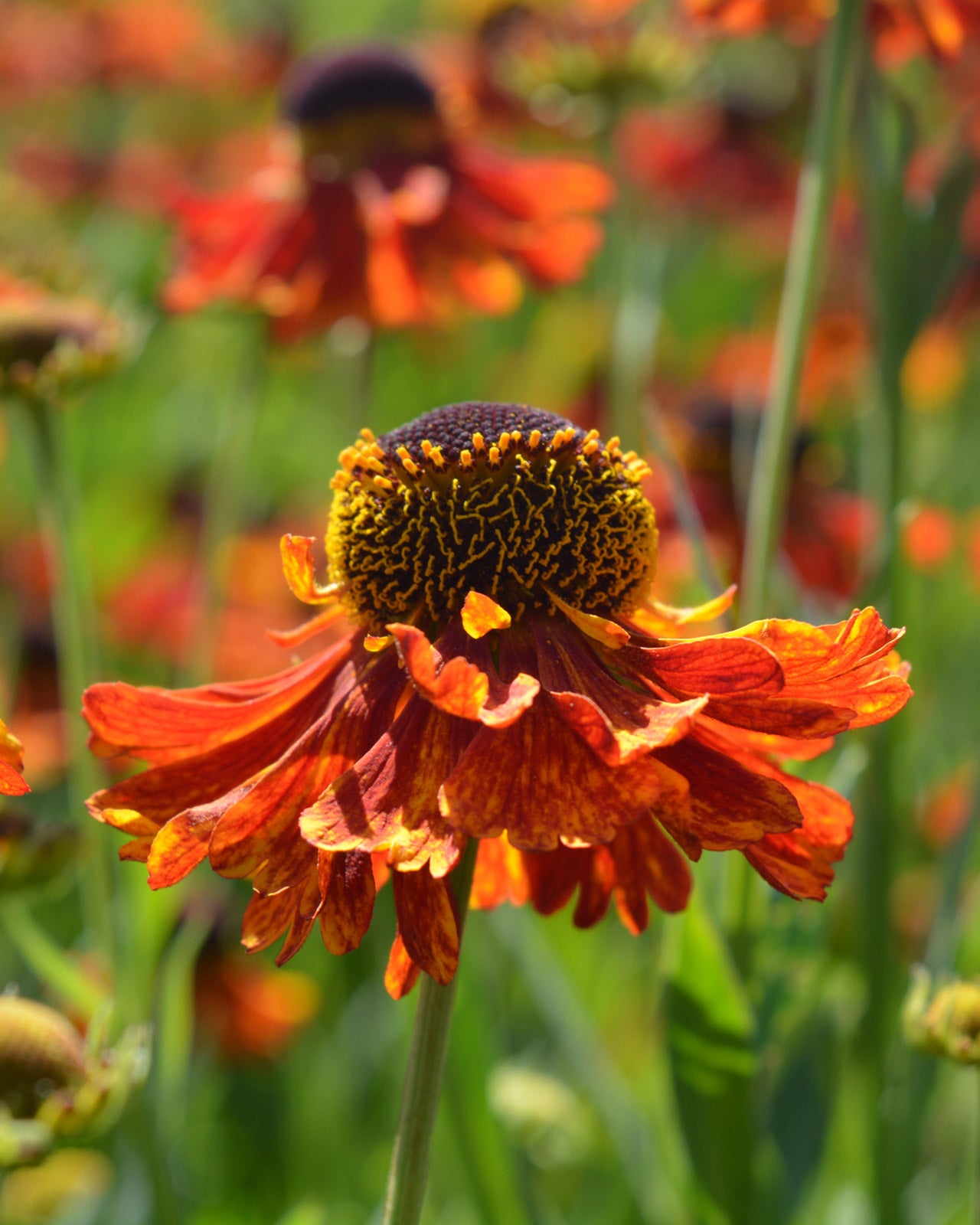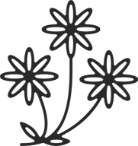
-
Why we like this plant
Helenium 'Waltraut' is a must-have for late-season colour, offering a warm, golden glow that complements deep reds, purples, and ornamental grasses. Its pollinator-friendly blooms ensure a lively, buzzing garden while its upright form provides structure and movement in planting schemes.
-
About this plant
Helenium 'Waltraut' is a standout perennial, cherished for its warm, golden-orange flowers with deep brown central cones. The daisy-like blooms emerge in midsummer and last well into early autumn, adding rich, fiery hues to borders. Its upright, clump-forming habit makes it an excellent structural plant for mixed plantings. Highly attractive to bees and butterflies, 'Waltraut' enhances wildlife-friendly gardens while also making a fantastic cut flower. Thriving in moist but well-drained soil, it pairs beautifully with ornamental grasses, rudbeckias, and other late-season perennials.
-
Key features
- Copper-orange, daisy-like flowers with golden highlights
- Long flowering period from midsummer to early autumn
- Upright habit, adding height and structure to borders
- Attracts bees, butterflies, and other pollinators
- Perfect for wildlife gardens, prairie planting, and cut flowers
-

Height and
spread -

Growth
habitUpright, clump-forming
-

Moisture
Moderate to high; prefers consistent moisture but not waterlogged conditions
-

Position in
the GardenBorders, cottage gardens, prairie planting, wildlife-friendly gardens
Planting guide
- Plant in well-drained, fertile soil enriched with organic matter
- Space plants around 40-50cm apart to allow for spreading
- Best planted in spring or autumn for strong establishment
Care tips
- Deadhead regularly to prolong flowering
- Cut back after flowering to encourage fresh foliage
- Divide clumps every 3-4 years to maintain vigour
- Water regularly in dry periods, as heleniums prefer consistent moisture
- Apply a general-purpose fertiliser in spring to promote strong growth
Winter care
- Fully hardy and requires minimal winter care
- Leave seed heads for winter interest and wildlife
- Mulch lightly in autumn to insulate roots in colder regions










